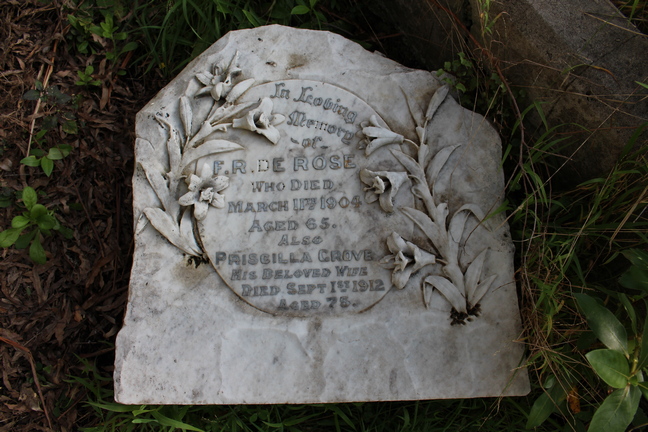It’s hard to not notice the de Rose plot as sadly the headstone has tumbled from its perch and lies in the path. Frederick Richard de Rose was born in…

John Blundell
The death is announced of Mr John Blundell of the “Evening Post” proprietary John was born in Dublin where his father Henry was manager of the “Evening Mail”. The family…

Incledon
We have often admired this headstone for its unusual ‘drop shadow’ leadwork lettering, which seems quite modern for the era. It was a prime candidate to be cleaned. The plot…

Kroner – were they spies?
This is a postscript to our last story which prompted our reader Liz Moir to message us and ask the question. Were we missing something? Were they spies? To answer…

Hildegard Kroner
This headstone for 8 year old Hildegard Kroner is the only evidence of three generations of the Kroner family in New Zealand. Her grandfather Heinrich Wilhelm Kroner [sometimes Kroener] came…

Walter Phelps Bibbing
Who is W.P.B? The Burial Register provides the answer: Walter Phelps Bibbing. His death in the newspaper says ‘Little is known of Bibbing. He came to Wellington by the Waikere…

Harry Clifton Gibbons
Harry Clifton Gibbons – seed merchant Harry was born in Lincoln, England and came to New Zealand in 1884, aged 23. For many years was in the seed business on…

Dulcie Quig
The Mystery of George Shaw Dulcie Belle Quig was the first wife of Thomas Ellis Glover, a well-known Wellington cartoonist. Dulcie married Tom in 1916, at the age of 20….

Claude Woodford
Claude Albert Curtis Woodford – served in WWI twice Claude was 8 years old when his father died in 1895 (see previous story). He went to Sydney Street school and…

Thomas Woodford
Sudden Death of Mr T C Woodford Thomas Curtis Woodford was born in 1848 in Paddington, London to a watchmaking father. The family emigrated to Canterbury when he was ‘quite…

